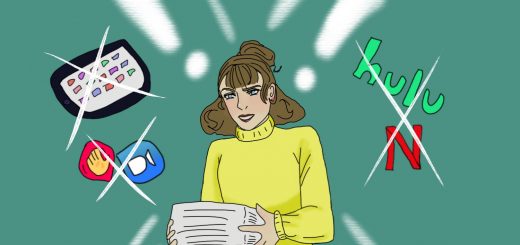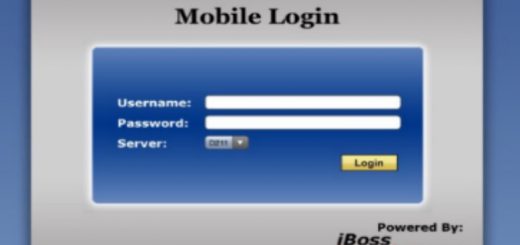Understanding news literacy and how to become well-informed
Recently, many students fell for a fake Twitter post of an inappropriate email supposedly sent from Conant’s technology coordinator, despite the fact that it was easy to see that the picture was photoshopped after staring at it for a few minutes. This incident got many thinking: if students are so quick to fall for a badly photoshopped picture about a school administrator, what else do they fall for? Because the internet is updated with news, fake or real, every minute, it is important to distinguish between fake news and real news.
The importance of news literacy
According to Stony Brook University, “News literacy” is a life skill in the Digital Age, designed to help develop critical thinking skills needed to judge the reliability and credibility of information.
Students are flooded with a large amount of information every day, which makes it difficult to figure out what is reliable, and according to research, most people prefer information that support their beliefs. The internet and social media make it easy to select information that support students’ ideas, reinforcing them instead of challenging them.
CHS Librarian Cindy Taylor said, “We are living in an Information Age, and the media tries to manipulate the perception of the viewer. As a consumer in this age, you have to be able to distinguish between what’s real and what’s not.”
She goes on to say that the news affects people in all sorts of ways. For example, the news might impact the facts a student writes in a research paper, and it might impact an adult by tricking them into buying a car for a higher price than it should be sold for.
“This is why it is so important to be educated in your news,” Taylor continued, “but the media is always putting information on the internet that isn’t true.”
She described that a healthy society can only exist if the public is well-informed. If people are easily misled by rumors or gossip, the consequences can be bad, and sometimes, dangerous. PBS Newshour writes that trending news stories, whether fake or real, feed the attention economy, whereby “if people pay attention to a certain topic, more information on that topic will be produced.”
In cases such as the Ebola outbreak two years ago, fake news sources such as the National Report, which specializes in satire, set up real-looking news about a Texas family who had tested positive for Ebola. The story, which was shared over 330,000 times on Facebook, created irrational fears and mass panic about the virus.
While a majority of fake news doesn’t lead to these specific consequences, the continued re-tweeting and posting of such news causes more inaccuracy to be put on the internet. Thus, it is important to always verify all news.
How to figure out what news to trust
CHS provides its students with a variety of resources in order to determine the credibility of a source. Taylor said the best way to get information is to utilize the databases from the media center, which can be found on the media center page on the CHS website.
“We have just about everything on the database pages,” she explained. “For example, if you want to buy a car, we have consumer reports on the pages to show you if the prices the dealer is charging you are accurate.”
“We also have information to use for research papers because the information on our databases comes from experts in their fields,” she continued. “That’s very helpful to all students to verify information they find on the internet.”
She said that the databases can be used for personal and professional use, and if students have a difficult time logging in, they should talk to the librarians or their teachers. The librarians have also set up an interactive display next to the juice bar for students to use in order to learn more information about fake news and real news.
English teacher David Gwizdala recently taught his junior class about news literacy before they began work on research papers, and his student Kelly Dailey, ‘18, described other ways for students to confirm if their sources are credible.
“An important thing [I learned] was going beyond checking for a verified Twitter account and looking up the writers of articles and checking for photoshop,” she said.
“[I also learned] to look out for bias in news reports,” she went on. “You have to search your way to the truth instead of believing what you see right away.”
Another student from Gwizdala’s class, Brie Chahine, ‘18, said, “I discovered that sources like Yahoo aren’t always reliable, and I learned ways to verify my sources. If you go to a website and are unsure if it’s trustworthy or not, you should always skim through other websites and see if it feeds the same information.”
She also said to watch out for sources that politically skew left or right on the political spectrum. For example, if a student is researching something about politics, he or she should check if the website leans towards the liberal or conservative side. “If an article is not neutral on a topic, chances are the author will write it using assertions and [selective] facts, rather than straight facts,” Chahine said.
CHS debate team member Arjun Rao, ‘17, said he always uses information from moderate sources for research on debate topics. “Moderate sources don’t have biases,” Rao said. “I trust them the most when performing research for my team.”
Rao said he trusts sources such as The Wall Street Journal, Washington Post, The Economist, Forbes, The New York Times, and CBS to be moderate and credible.
Taylor also said moderate sources were important, and she said a way to figure out whether a source’s political bias is by looking for the words “sponsored content” on its website. “Sponsored content means someone is paying to put those words on the website,” she explained, “so pages without ‘sponsored content’ are better sources.” Taylor said other indicators of false sources are a lack of dates and authors.
A few of Taylor’s most trusted sources are journals. She uses School Library Journal to decide which books to purchase for the library. She also reads articles from the National Geographic Magazine.
In addition, students should also unfollow fake news sources on social media. Psychologists say that by unfollowing, the likelihood of coming across more fake news diminishes, and it also decreases the chances of the source being further spread across the internet.
Consequences of fake news are very real. Here at Conant, the Twitter prank–and the constant re-tweeting of the picture–caused some to unnecessarily raise questions about a respected administrator’s reputation. It’s important to pay close attention to all information and take the time to verify the truth, and especially important not to pass falsehoods on to other people.
“The media will continue to throw news at students all the time, but there are always resources they can use to figure out the truth,” Taylor said. “I would advise all students to use the sources available to them to take in the information, digest it, and conclude.”




Recent Comments